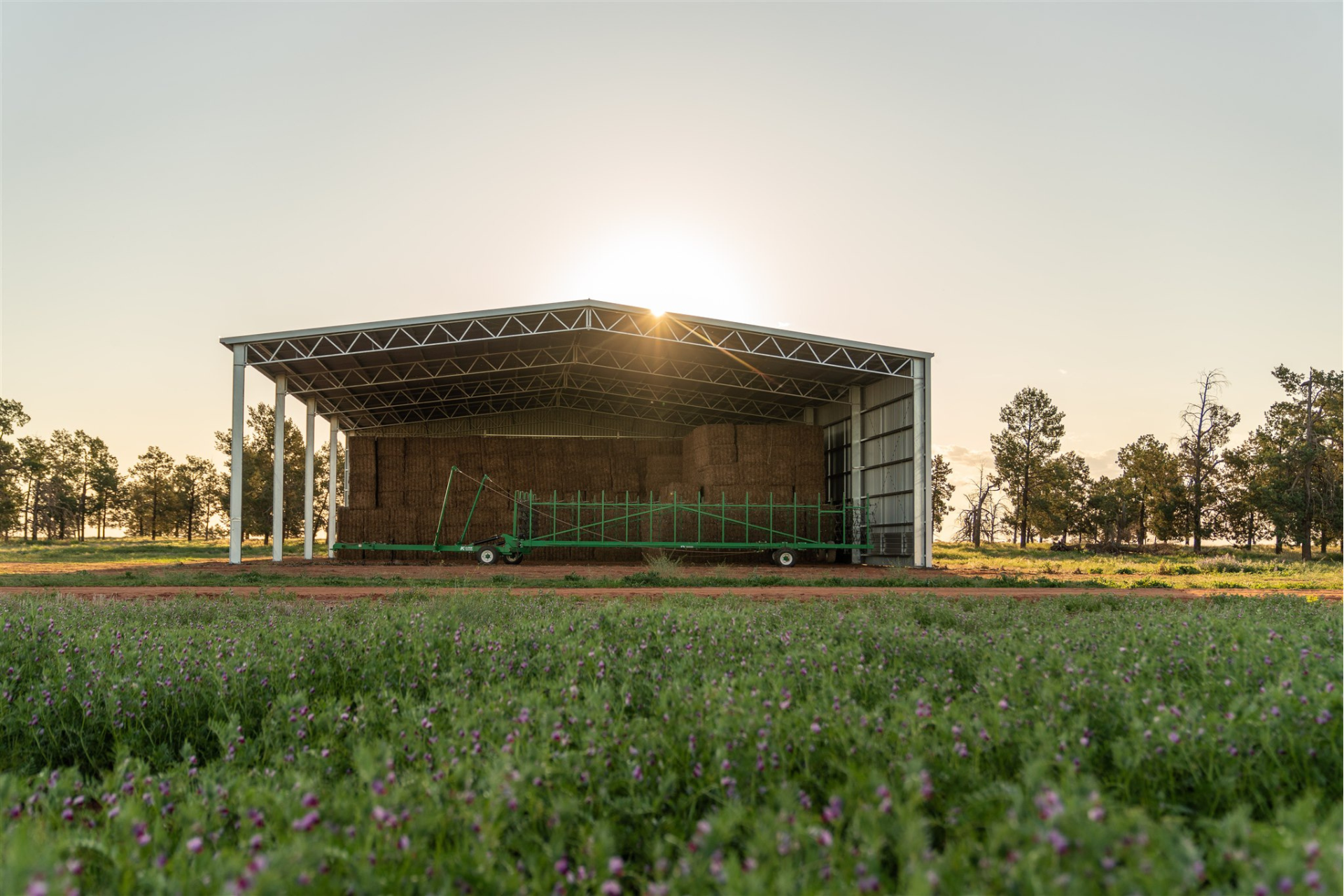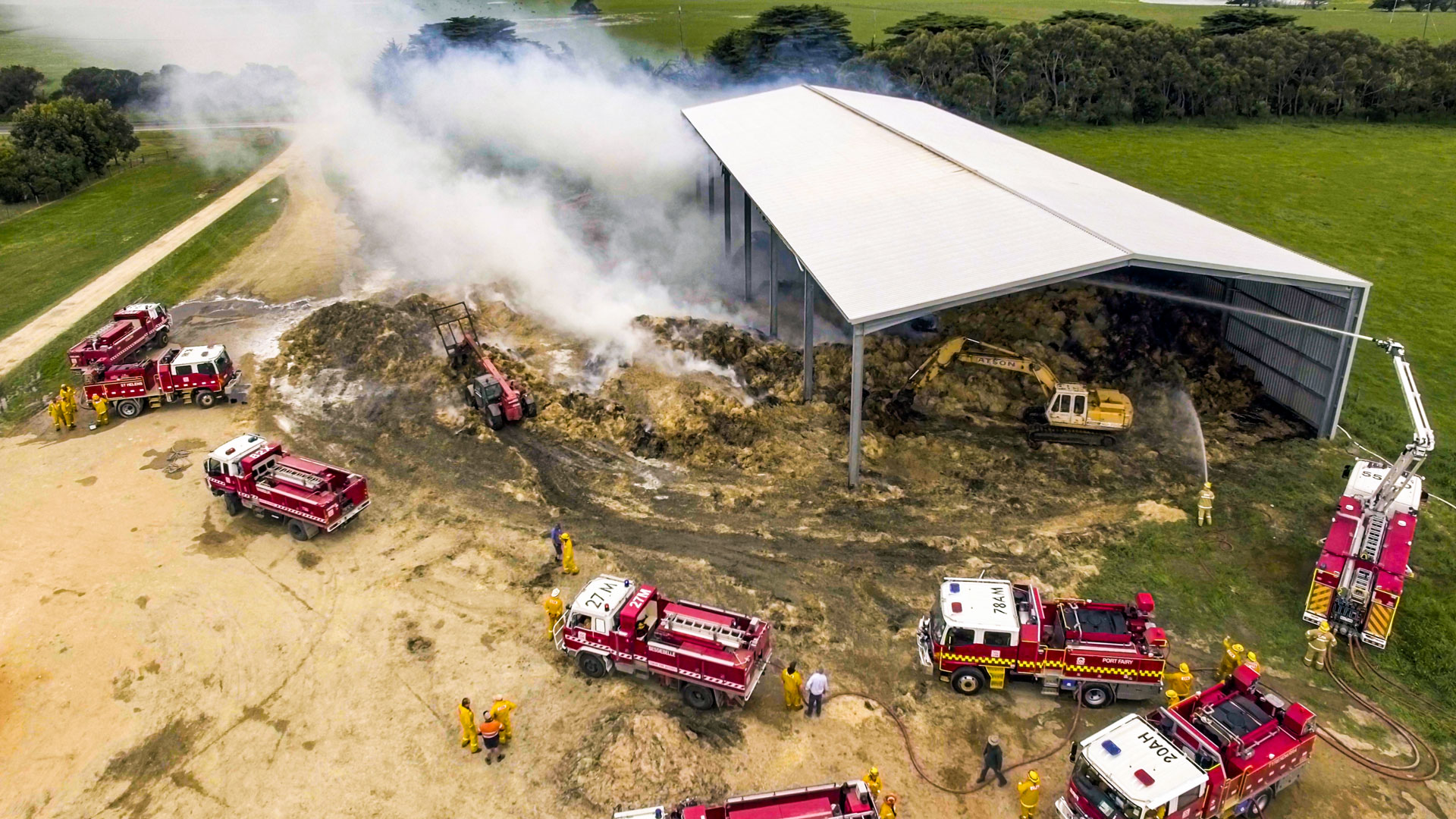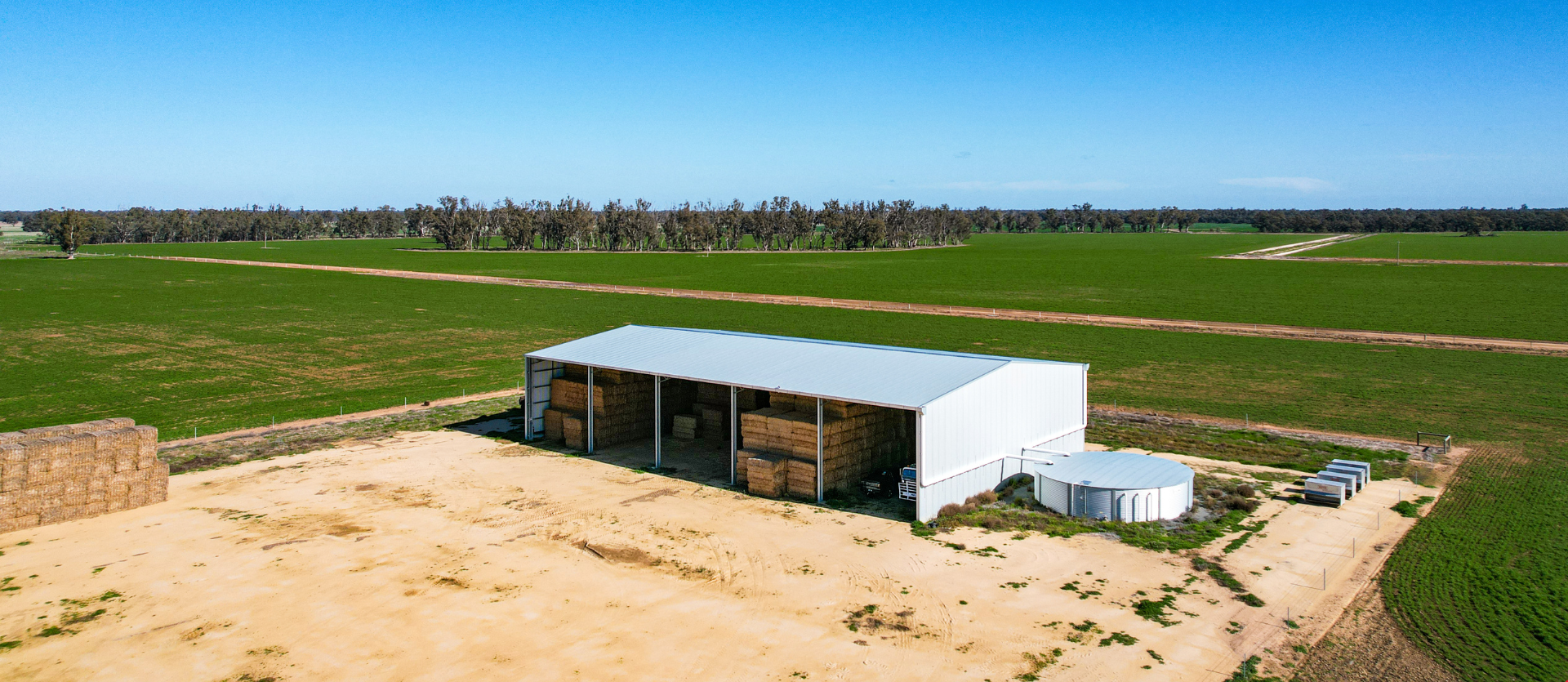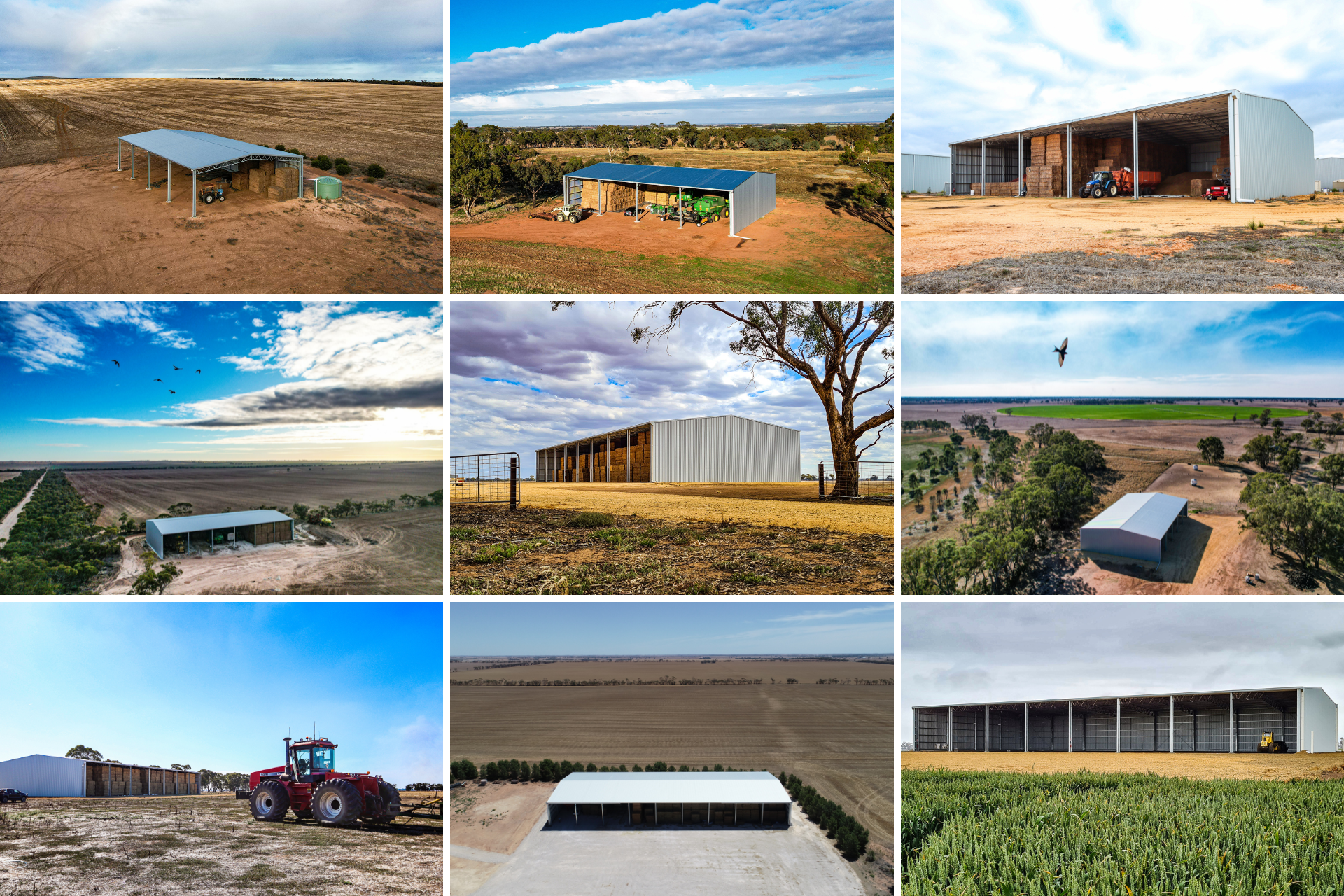There are several ways that you can store your hay. But which is the best hay storage option?
In this article we look at each of the different ways you can store hay including permanent storage options such as sheds, semi-permanent storage such as tarps or hay caps and uncovered hay.
Keep reading to find out what type of hay storage is best for your hay.
First up is permanent hay storage.
1. Permanent storage
A hay shed has the lowest dry matter loss of any hay storage option and will also maintain higher nutrient content, digestibility and palatability.
While we recommend a three-sided open front hay shed to store your hay, even a roof only hay shed will provide better storage than a tarp or semi-permanent cover.
A three-sided open front shed will provide the best protection for your hay. But even a roof-only hay shed will provide better protection than a tarp or hay cap.
Action Steel Click to Tweet
Other key advantages of a hay shed is its versatility and lifespan:
- A hay shed can be used to store other feed or to protect machinery in the off-season. This means you are always getting some sort of return from your investment.
- An Action hay shed has a long lifespan and there are minimal annual labour time and costs associated with a hay shed compared to more semi-permanent options.
- Although a hay shed is a fixed structure with higher short-term capital cost, it is a versatile investment and the market value of your shedded hay versus the market value of unshedded hay can quickly cover the costs.
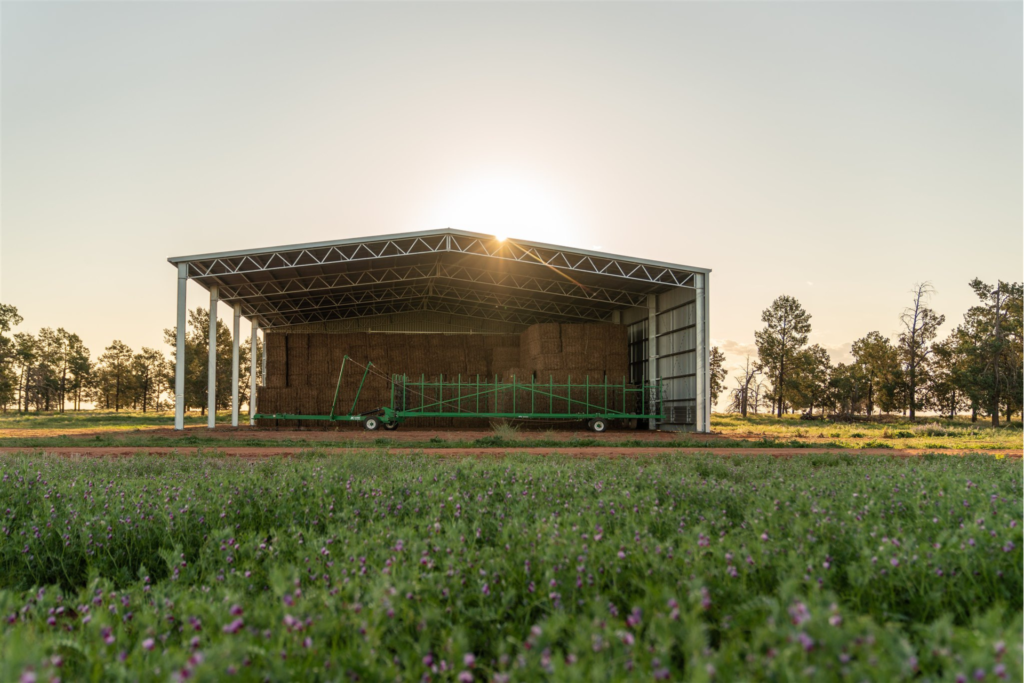
2. Semi-permanent hay storage
A semi-permanent option like tarpaulin has the advantage of being relocatable and can be used as either a cover or a liner.
However, compared to a hay shed tarpaulins have a higher dry matter loss. This is because the tarps can be loosened by the wind and have rainfall collect on them.
Exposure to the sun and wildlife can reduce the lifespan and effectiveness of the tarp. Any damage to the tarp increases the risk of hay spoilage.
3. Uncovered hay
Uncovered hay has the highest dry matter loss, often up to 50% more than permanent structures! This is worsened in areas with high rainfall, wind and humidity.
Arid and low-rainfall areas will see the least amount of hay loss from spoilage, but it only takes a single downpour to wipe out any cost savings.
Hay Sheds versus Tarps
Hay bale covers, or tarps, are a just-the-basics options for covering your hay and are ineffective for long-term storage. Although they protect your hay from the weather to a degree, their open sides make spoilage an issue, particularly in damp areas.
On the other hand, an open front hay shed on a properly prepared site with good drainage will ensure that your hay will come out of the shed the same condition as it goes in.
When making your decision, compare the costs, lifetime, versatility and the convenience of your storage options.
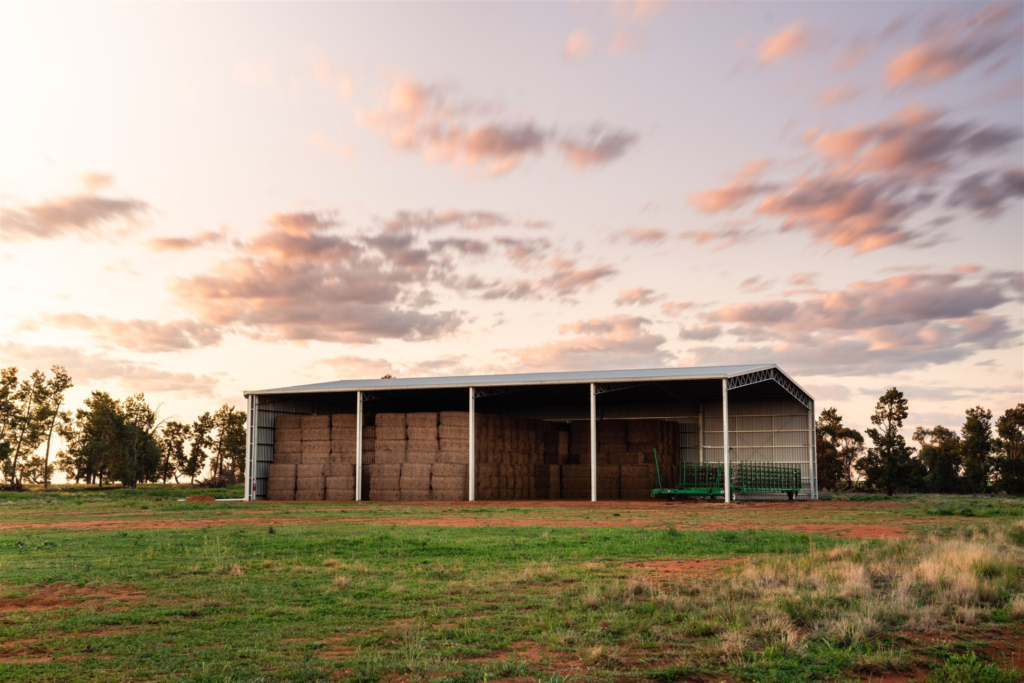
So, that’s an overview of the three main options for hay storage and which works best.
You might also find these articles helpful:
- What Is The Most Cost-Effective Hay Shed Design?
- What Is The Lead Time For A New Farm Shed?
- What Is The Best Roof Pitch For A Shed?
- Why Is There Moisture In My Shed?
And browse our Learning Hub for the latest farm shed resources. Or check out our projects gallery for ideas and inspiration!

